Fix ClipGrab Error 403 on Windows and MacOS
Some Windows and macOS users that are trying to use ClipGrap to fetch videos from Youtube are reporting that the software regularly returns the error code 403. This particular HTTP code means that access to the requested resource is forbidden.

After investigating this particular issue, it turns out that there are several different underlying causes that might be triggering this error code. Here’s a list of scenarios that are most likely occurring:
- The web application is currently down – As it turns out, you can expect to encounter this type of issue if a supported streaming platform has made a change the breaks the streaming protocol for ClipGrab. In this case, there is no fix other than waiting for the developers to resolve the issue on their part.
- Outdated ClipGrab build – Another popular reason that might return this error code is an outdated ClipGrab build that is not equipped to use the latest streaming protocol enforced by the developers. Since there’s no auto-update function on ClipGrab, you’ll need to manually uninstall the current version before installing the latest available build.
- Security interference – According to a lot of affected users, you can also see this error code if the security suite that you’re actively using has flagged ClipGrab as a potential security threat due to a false positive and it’s actively blocking it. In this case, you can resolve the issue either by disabling the real-time protection or by establishing a whitelisting rule for ClipGrab.
Now that you are familiar with every potential culprit that might produce this error, here are a couple of methods that will most likely allow you to fix the issue:
Method 1: Checking the status of ClipGrab
Keep in mind that since Clipgrab is developed independently, it’s prone to break every time a supported platform like YouTube, Vimeo, Dailymotion, or Facebook makes a change that breaks the download protocol.
Given the small team behind it, you can expect the 403 error to occur until the developers react and adapt to the changes – This has happened a few times in the past, and typically the issue was resolved in a couple of days.
So before trying any of the other potential fixes below, start by visiting the official Twitter account of ClipGrab and checking for any official announcements regarding an ongoing issue.

Another good place to check for an ongoing ClipGrab issue is the official support forum of ClipGrab – If you find that other users are currently reporting the same kind of issue you’re getting, you can safely conclude that the issue is beyond your control.
On the other hand, if you find no evidence that the 403 error in ClipGrab is currently experiencing server issues, move down to the first potential fix below.
Method 2: Updating ClipGrab to the latest version
If the previous investigation has found that the issue cannot be attributed to a server issue, the next potential culprit you should investigate is your current ClipGrab build.
As stated previously, ClipGrab is prone to break whenever YouTube, Vimeo, and the rest of the supported platforms make a change in their streaming protocol. But even if the developer fixes the issue promptly, you still need to get the changes to show up on your PC or Mac.
And given that ClipGrab has no AutoUpdate function, the only way to ensure that you’re running the latest version is to uninstall the current one and download the latest from the official channel.
To accommodate both user bases, we’ve put together 2 sub-guides that will show you how to do this on Windows and macOS:
A. Updating ClipGrab on Windows
- Press Windows key + R to open up a Run dialog box. Next, when prompted by the Run prompt, type ‘appwiz.cpl’ and hit Enter to open up the Programs and Features menu. When you’re prompted by the UAC (User Account Control), click Yes to grant admin access.

Opening the Programs and Features menu - Inside the Programs and Features menu, scroll down through the list of installed programs and locate the entry associated with ClipGrab.
- When you manage to locate the correct entry, right-click on it and choose Uninstall from the context menu.
- Once you’re inside the uninstallation screen, follow the on-screen prompts to complete the uninstallation, then restart your computer.
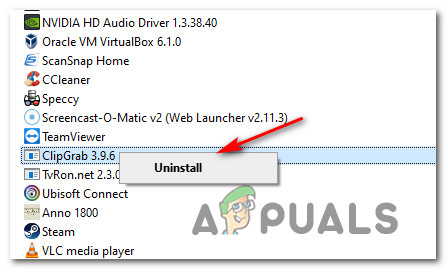
Uninstalling ClipGrab - After your computer boots back up, open your favorite browser and navigate to the official download page of ClipGrab.
- Inside the download page, click on Free Download from the list of available options.

Downloading the latest version of ClipGrab - Once the installer is downloaded, double-click on it, click Yes at the UAC (User Account Control), then follow the on-screen prompts to complete the installation of the latest version.
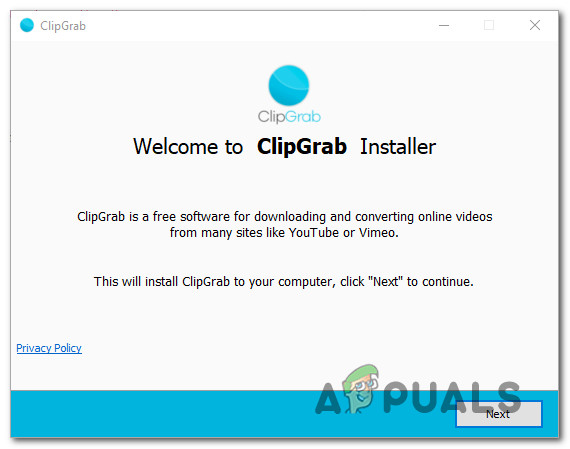
Installing the latest version of ClipGrab Note: When asked to install the bloatware, you can skip the installation by clicking on Skip all.
- Wait until the installation is complete, then restart your computer and see if the problem is fixed once the next startup is complete.
B. Updating ClipGrab on macOS
- Open the Launchpad by clicking on the associated icon from the dock menu or by launching it from the Applications folder.
- Once you are inside the Applications folder, press and hold the option (⌥) key until you see the ClipGrab app jiggle.
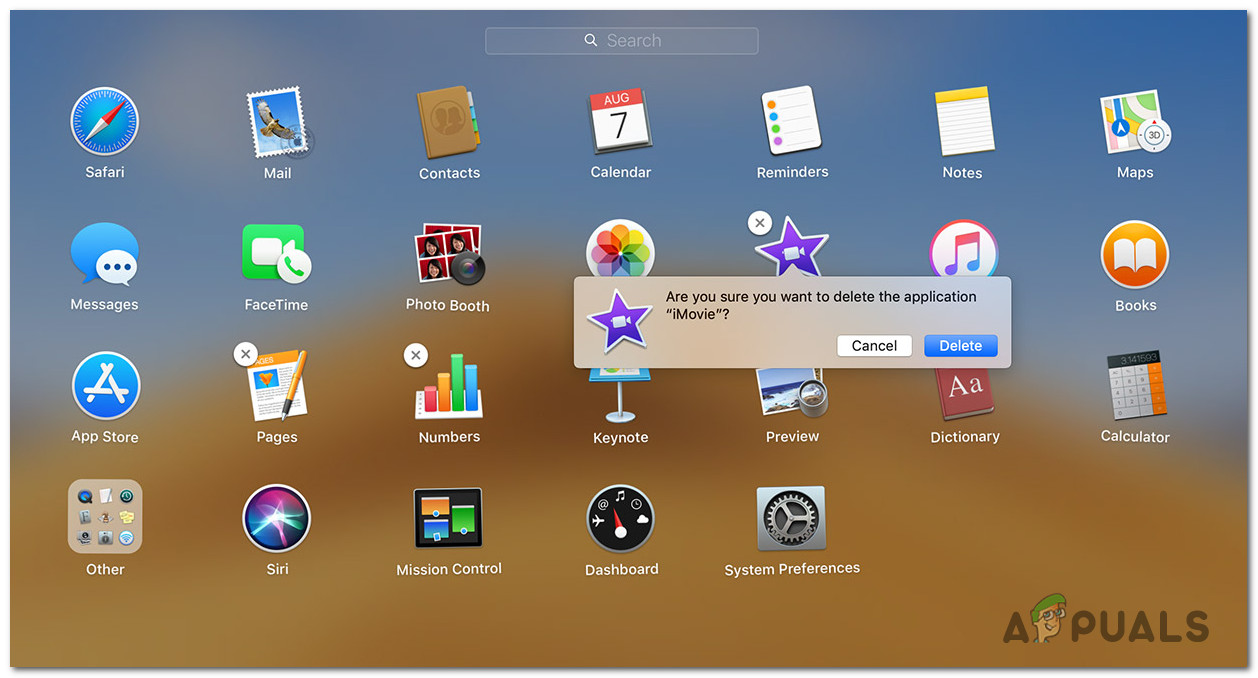
Uninstalling the ClipGrab application Note: In case you don’t see the application appearing inside the Launchpad, type its name inside the search field at the top of the screen.
- When you see the jiggling, press the X icon next to the app in order to uninstall it. At the confirmation prompt, click on Delete to confirm the operation.
- Once the application has been completely uninstalled, open Safari or your preferred browser and navigates to the download page of ClipGrab.
- Once the .dmg is downloaded, follow the on-screen to complete the installation.
- Once the latest version of ClipGrab is installed, open the application and see if the problem is now fixed.
If the same problem is still occurring, move down to the next potential fix below.
Method 3: Preventing the Security suite interference (Windows 10 Only)
If you’re experiencing the 403 error on a Windows computer, there’s a big chance you’re seeing this problem due to a problem fetching the youtube.dll which is a requirement when grabbing content from YouTube using ClipGrab.
But as it turns out, you can expect this download to fail due to the default security suite (Windows Security) flagging the main executable of ClipGrab as a potential security threat due to a false positive.
Fortunately, several affected users that were also dealing with this problem have reported that they managed to fix the apparition of this error either by whitelisting the main ClipGrab executable or by disabling the real-time protection when using ClipGrab.
To make matters easier for you, we’ve created 2 separate sub-guides to accommodate both scenarios:
A. Disabling the real-time protection
- Start by pressing Windows key + R to open up a Run box. Next, type ‘ms-settings:windowsdefender’ inside the text box and hit Enter to open up the Windows Defender Security Center.
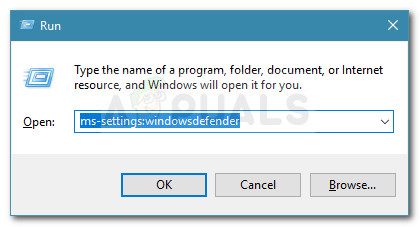
Accessing the Windows Defender menu on Windows 10 Note: If you’re prompted by the UAC (User Account Control), click Yes to grant admin access.
- Inside the Windows Security window, go ahead and use the left-hand pane to click on Virus & Threat Protection.
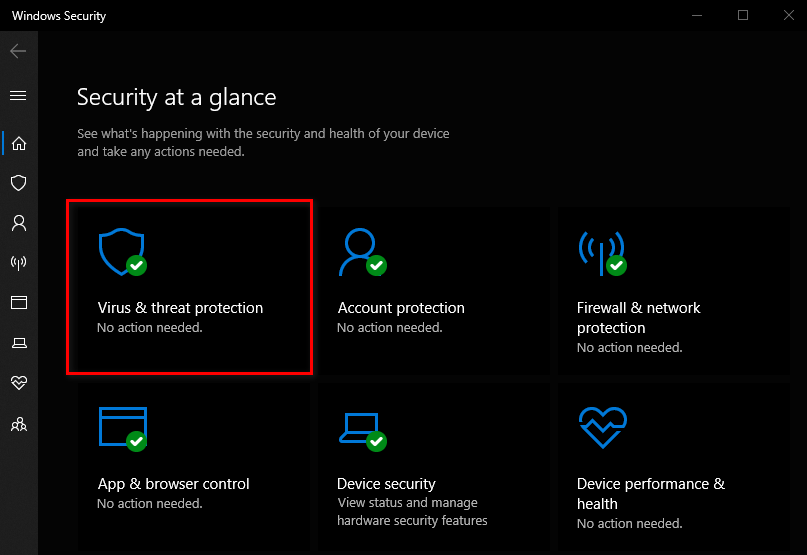
Accessing the virus protection tab - Inside the Virus & Threat protection screen, click the Manage hyperlink under Virus & threat protection settings)
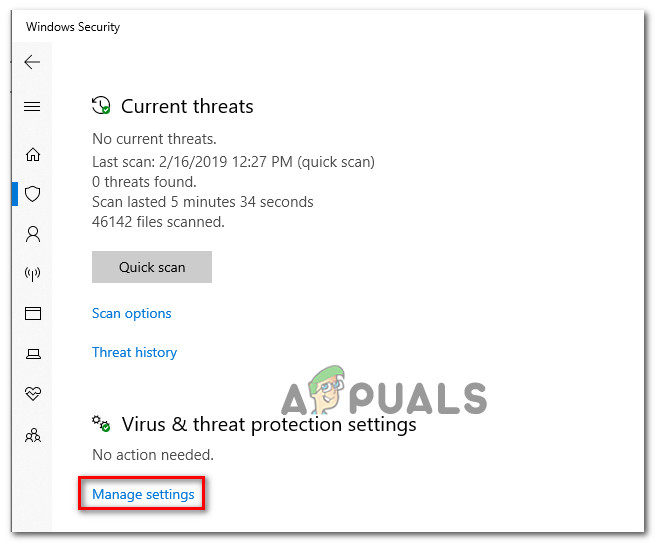
Accessing the Virus & Threat protection settings - Once you get to the next screen, go ahead and disable the toggle associated with Real-Time Protection. When prompted by the warning, confirm again to turn the feature off.

Disabling the Real Time protection - As soon as you manage to disable the real-time protection, make your way to the initial Windows Security menu, then move over to the right-hand section and click on Firewall & network protection.
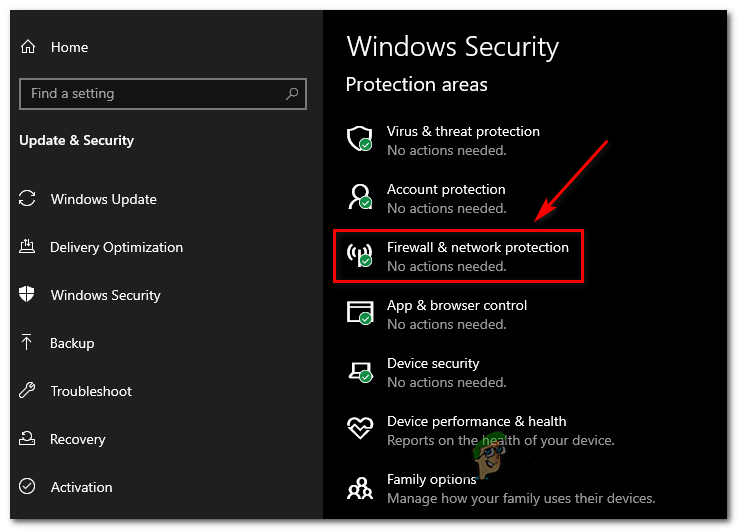
Accessing the Firewall and Network Protection - After you get to the next menu, click on the network that you’re currently using. Next, scroll down through the list of items and disable the toggle associated with Windows Defender Firewall so that it’s set to OFF.
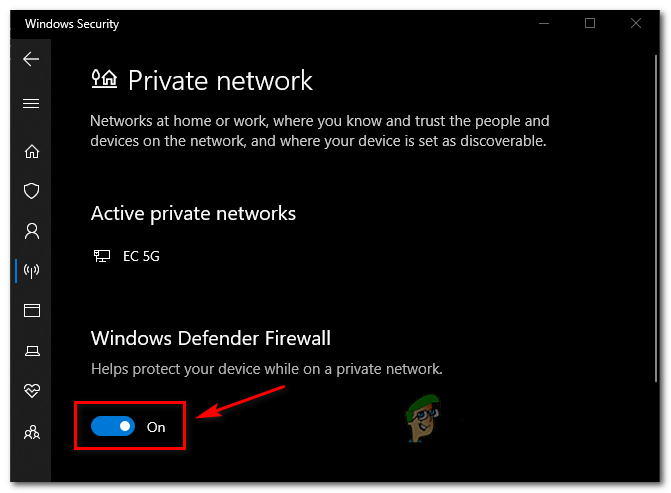
Disabling the firewall component - Now that the Windows Firewall component and real-time protection have both been disabled, open ClipGrab once again and see if the issue is now fixed.
B. Whitelisting ClipGrab’s executable
- Start by pressing Windows key + R to open up a Run dialog box. Then, type ‘control firewall.cpl‘ inside the text box and press Enter to open up up the classic interface of the Windows Firewall.
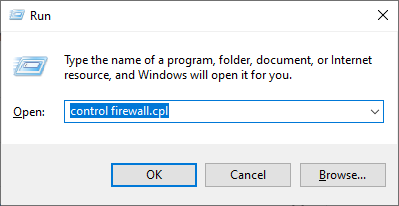
Accessing the classic Firewall menu - Inside the Windows Defender Firewall menu, move over to the left-hand menu and click on Allow an app or feature through Windows Defender Firewall.
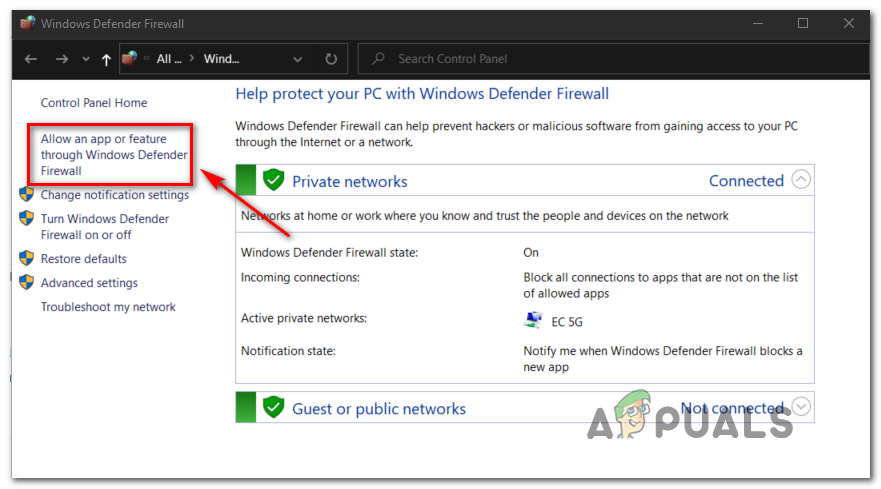
Allowing an app or feature through Windows Firewall - Inside the Allowed apps menu, click on the Change settings button. Next, click Yes at the User Account Control (UAC) prompt to grant administrative privileges.
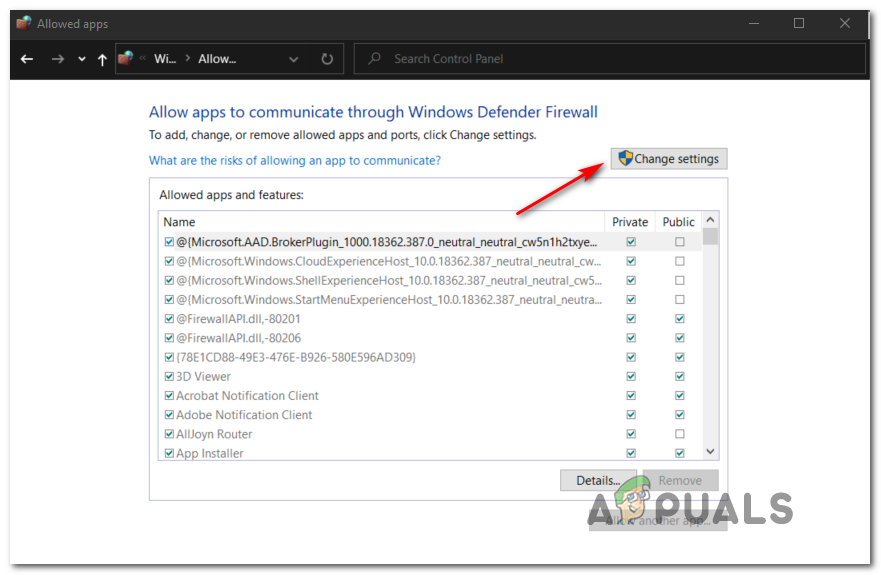
Changing the settings of Windows Defender - Once you are granted admin access, scroll down through the list of allowed applications and see ClipGrab is on that list. If it’s not, make sure that both boxes (for Private and Public) are checked before clicking on Ok to save the changes.
Note: In case ClipGrab is not added to this list, click on Allow another app and add the two entries manually. - Launch ClipGrab once again and see if you have managed to fix the 403 error code.





